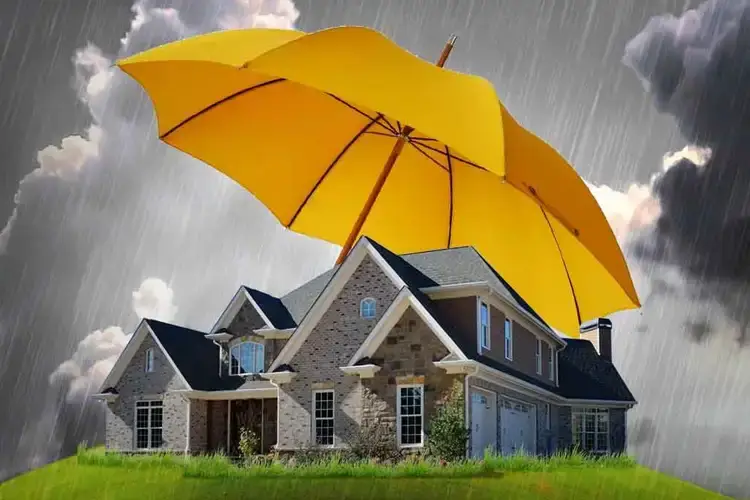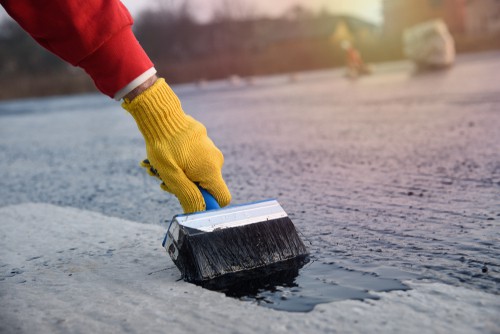When to Consider Sump pump installation & replacement Omaha: Signs, Costs, and Timing
How Waterproofing Functions: A Comprehensive Look at Techniques and Technologies
Waterproofing is important for securing frameworks from moisture-related damage. It entails various techniques and innovations that develop obstacles versus water breach. Standard approaches, such as compacted clay, exist side-by-side with modern-day advancements like liquid-applied membrane layers. Comprehending the nuances of these methods is essential for efficient application. The efficiency of any kind of waterproofing service hinges not only on the strategies made use of yet additionally on continuous upkeep and evaluation. What are the crucial elements that affect long-term performance?
Recognizing the Fundamentals of Waterproofing
Waterproofing is an important procedure that secures frameworks from water breach, which can result in significant damage gradually. This method includes the application of different materials and strategies developed to develop an obstacle against dampness. The main objective is to avoid water from permeating surface areas, which can create degeneration, mold and mildew growth, and structural instability.Various factors influence the option of waterproofing method, including the kind of structure, its location, and environmental problems. Understanding the physics of water movement and the homes of various materials is critical in selecting an efficient waterproofing solution.Effective waterproofing not just safeguards structures but likewise improves their durability and integrity. Normally, it is integrated into the style stage of construction to ensure complete security. As awareness of water-related problems grows, the importance of recognizing waterproofing fundamentals ends up being significantly clear to architects, builders, and homeowner alike.
Traditional Waterproofing Approaches
Typical waterproofing methods have been made use of for centuries, depending on tried and true strategies and materials to safeguard structures from water damage. Among the oldest approaches entails the usage of clay, which, when compressed, develops an all-natural barrier versus dampness. Furthermore, bitumen, a sticky, black product originated from petroleum, has actually been utilized for its water-resistant residential or commercial properties, usually put on roofing systems and foundations.Another technique entails the application of lime-based plasters, which give a breathable layer that enables dampness to get away while stopping water access. Thatch roof, a conventional technique still seen in some societies, provides excellent waterproofing as a result of its securely loaded straw layers.Moreover, using stone and block has actually projected, as these materials are inherently immune to water when properly installed. On the whole, standard waterproofing approaches emphasize the significance of picking ideal materials and building methods to improve durability versus water breach.
Modern Waterproofing Technologies
Advancements in contemporary waterproofing innovations have actually changed the method structures are shielded from water damage. Cutting-edge methods such as liquid-applied membranes and advanced sealants have improved the performance and adaptability of waterproofing services. These innovations permit smooth application, decreasing the danger of leakages and making certain comprehensive coverage over complicated surfaces.Moreover, the assimilation of smart technologies, such as wetness sensing units and automated monitoring systems, enables real-time analysis of waterproofing performance. This positive strategy assists in prompt maintenance and decreases long-lasting repair work costs.Additionally, innovations in spray-applied finishings supply fast application and excellent bond, adapting to numerous substrates while offering durable protection. Strategies like polymer-modified systems even more enhance versatility and resilience, making them suitable for varied atmospheres. On the whole, contemporary waterproofing innovations not only mitigate water breach however likewise add to the longevity and sustainability of structures, noting a significant shift in the sector.
Materials Made Use Of in Waterproofing
The effectiveness of waterproofing options heavily relies upon the materials utilized in their application. Various products are utilized to create barriers against water access, each with one-of-a-kind buildings matched for different atmospheres. Typically made use of materials include membranes, coatings, and sealants.Liquid-applied membranes, frequently made from polyurethane or acrylic, develop a seamless barrier that adapts to complex surface areas. Sheet membranes, usually built from rubber or thermoplastic, offer durability and are excellent for larger locations. In addition, cementitious waterproofing products, made up of cementitious compounds, provide excellent attachment and flexibility.Sealants made from silicone or polyurethane are vital for joints and joints, guaranteeing detailed security. Innovative products, such as geo-composite membrane layers, combine several features, boosting performance. On the whole, the option of waterproofing materials is essential in attaining long-lasting and effective water resistance, customized to details task needs and ecological problems.
Typical Applications of Waterproofing
Waterproofing plays a crucial duty in numerous sectors, making certain the durability and honesty of structures. Typical applications include property solutions that safeguard homes, commercial framework that safeguards companies, and commercial setups that call for robust defense versus wetness. Comprehending these applications highlights the significance of waterproofing in maintaining both safety and performance throughout various settings.
Residential Waterproofing Solutions
Several homeowners encounter obstacles with dampness intrusion, making efficient property waterproofing remedies crucial. Different methods exist to address this problem, including exterior and interior waterproofing systems. Interior options typically involve the application of sealers and coatings to cellar wall surfaces, which assist prevent water infiltration. Outside techniques commonly include the setup of drainage systems and waterproof membranes that draw away water far from the foundation.Additionally, house owners may think about sump pumps to get rid of water build-up and dehumidifiers to control moisture degrees. best waterproofing Correct grading and using rain gutters likewise play an important duty in taking care of water flow around the home. By implementing these techniques, homeowners can greatly lower the threat of water damage and mold and mildew growth, ensuring a completely dry and safe living atmosphere.

Commercial Facilities Defense
Effective waterproofing solutions play an essential role in the security of commercial framework. Water Solutions Omaha. These strategies are necessary for safeguarding structures, car parking structures, and bridges from water damages, which can endanger architectural stability and cause pricey repair work. Typical applications include the installation of membranes, coatings, and sealants that create barriers against wetness seepage. Areas such as cellars, roof coverings, and outside wall surfaces are typically focused on to guarantee longevity and durability. Furthermore, waterproofing systems can enhance energy efficiency by protecting against water-related issues that may bring about mold growth and degeneration. By applying robust waterproofing steps, homeowner can safeguard their investments and maintain operational efficiency, ultimately adding to the total sustainability of commercial facilities
Industrial Applications Overview
While numerous fields deal with one-of-a-kind difficulties, the requirement for reputable waterproofing services continues to be a constant in commercial applications. Industries such as manufacturing, building, and power frequently experience atmospheres where moisture direct exposure can endanger structural integrity and functional efficiency. In manufacturing facilities, waterproofing is essential for safeguarding machinery and materials from water damage. In building, it safeguards structures and basements against groundwater seepage. The power field depends on waterproofing for the security of tools in hydroelectric plants and overseas structures. Additionally, food processing industries use waterproofing to guarantee health and compliance with safety criteria. Overall, reliable waterproofing options are necessary for boosting resilience, safety and security, and efficiency throughout numerous commercial settings.
Upkeep and Long Life of Waterproofing Solutions
Waterproofing solutions are designed to use long-term security against wetness intrusion, normal upkeep is vital to assure their efficiency and longevity. Routine evaluations play a significant article duty in recognizing prospective concerns such as fractures, peeling off, or indications of water damages. Attending to these issues without delay can protect against additional deterioration and costly repairs.Additionally, cleaning the surface area of waterproofed locations assists eliminate dust and debris that could endanger the stability of the waterproofing obstacle. It's also suggested to reapply protective finishings or sealants as recommended by suppliers to maintain suitable efficiency. Environmental elements, such as UV direct exposure and extreme climate problems, can influence the life-span of waterproofing materials, making routine assessment essential
Regularly Asked Concerns
Can Waterproofing Be Applied in Winter?
The concern of applying waterproofing in winter raises worries regarding adhesion and curing. Several items may not do at their ideal in reduced temperature levels, necessitating careful option and consideration of certain guidelines for effective application.
The Length Of Time Does Waterproofing Commonly Last?
The duration of waterproofing effectiveness varies based upon products and ecological elements. Generally, it can last from five to 10 years, however regular maintenance and examinations are necessary to assure peak efficiency and long life.
Is DIY Waterproofing Effective and Safe?
The effectiveness and safety and security of DIY waterproofing depend on numerous aspects, consisting of material top quality and application method. While some people accomplish sufficient outcomes, others might run into issues that jeopardize long-lasting defense and architectural integrity.
What Are the Signs of Failing Waterproofing?
Indicators of failing waterproofing include visible water stains, peeling off paint, mold and mildew development, musty odors, and dampness in walls or ceilings - Foundation waterproofing Omaha. These signs recommend compromised obstacles, necessitating prompt examination and prospective remediation to avoid further damages
How Do I Select the Right Waterproofing Contractor?
